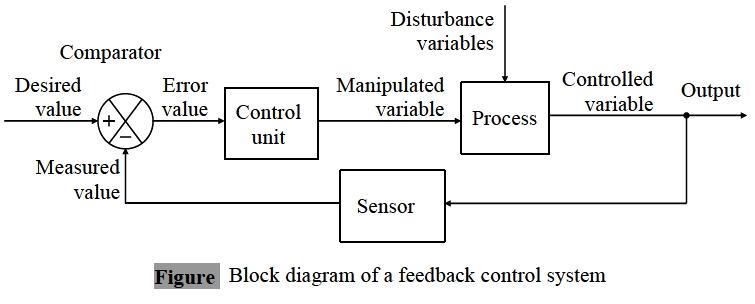directly and feed them back as input variables to the controller. Feedforward control systems on the other hand, do not measure changes in the controlled variable but rather other variables, termed intermediate variables, which are indicative of the controlled variable.
The interrelationship between the elements of a general closed loop feedback control system, is illustrated with the block diagram in Figure. The water level control system in Figure is an example of a closed loop feedback control system. The water level provided by the level sensor, is fed back to the error detector which calculates the error. The controller uses the error value to compute a suitable command for the inflow valve, thereby regulating the water level close to the desired value.
Feedforward control systems, on the other hand, will measure disturbance variables that directly influence the controlled variable.
Whereas feedback systems must wait for a deviation to occur before corrective action is taken, the principle advantage of feedforward control systems is that they act before deviations occur. In general, feedforward control is used to complement feedback control and to enhance system performance.
Feedback control: Measure the controlled variable to determine the control strategy.
Feedforward control: Measure disturbance variables to determine the control strategy.
